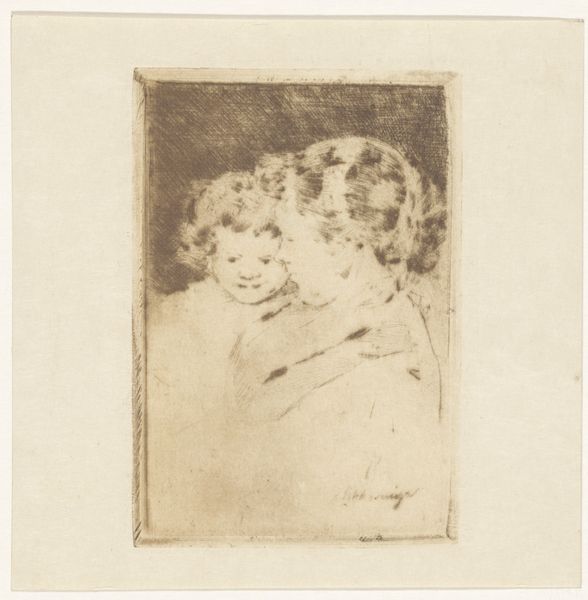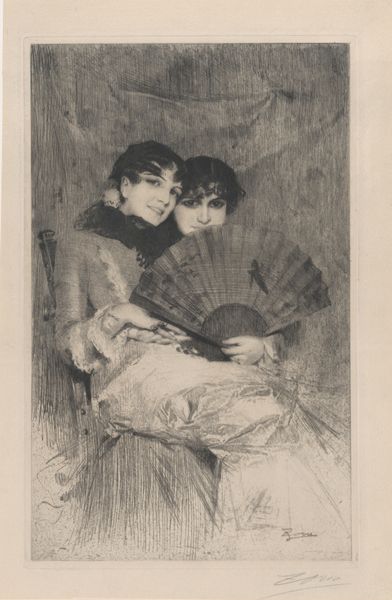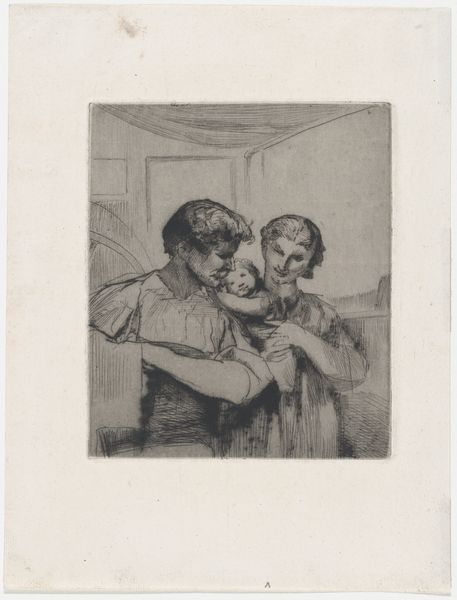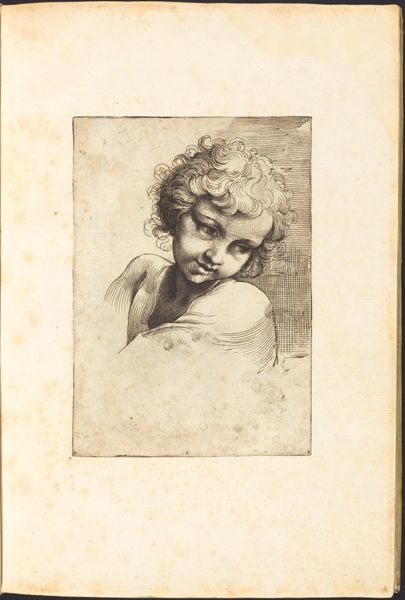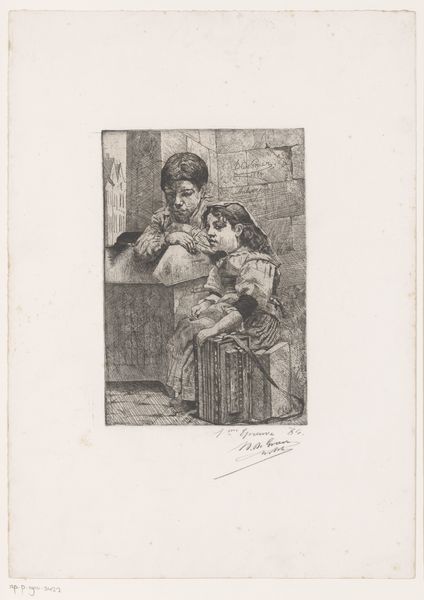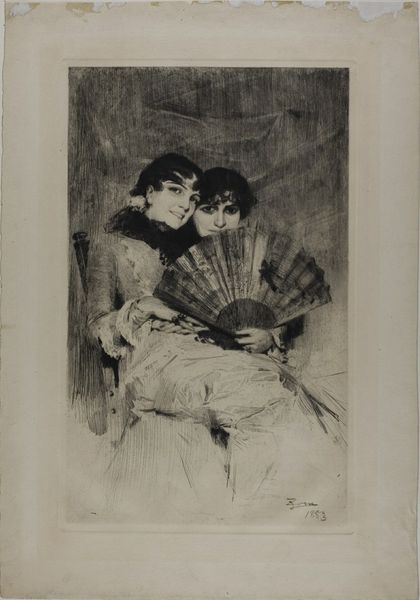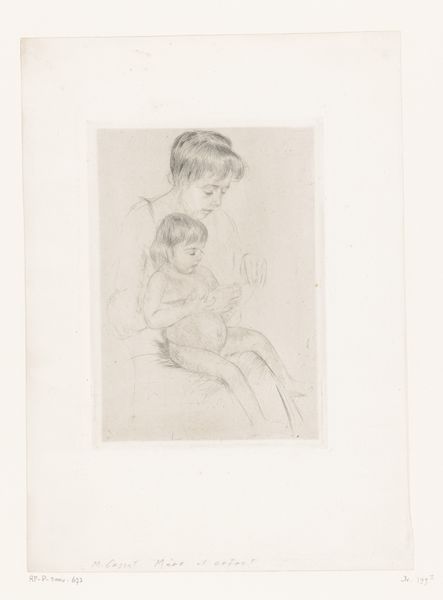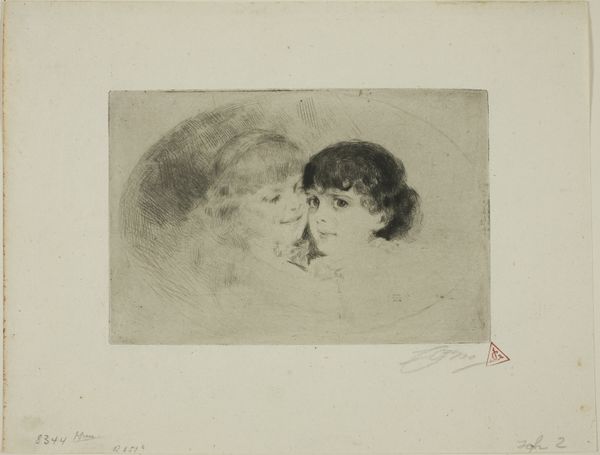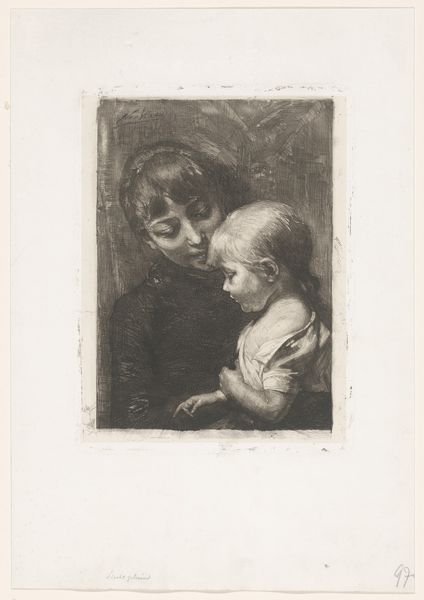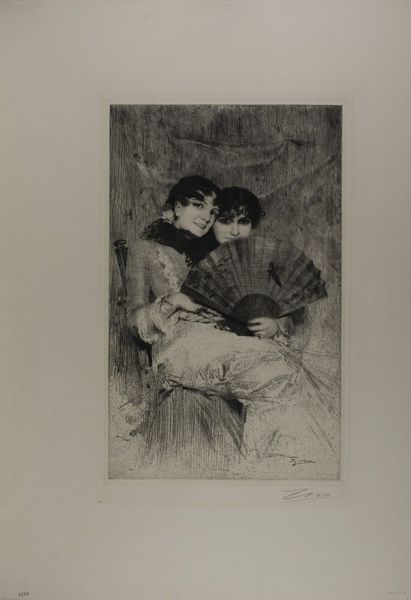
drawing, print, etching, paper
#
portrait
#
drawing
# print
#
impressionism
#
etching
#
figuration
#
paper
#
genre-painting
Dimensions: 405 × 276 mm (image/plate); 530 × 394 mm (sheet)
Copyright: Public Domain
Editor: Here we have Anders Zorn’s "Maternal Delight III," created in 1883. It's an etching on paper currently residing at the Art Institute of Chicago. The print possesses such a delicate mood to it, mostly shades of light grey with subtle textural differences created by the etched line. What compositional elements strike you the most? Curator: Primarily, it’s the relationship between the figures and the picture plane itself. Zorn meticulously balances areas of high contrast, drawing our eye directly to the faces, with softer, more diffused textures elsewhere, contained in a kind of ovoid shape. Notice how the hatching technique contributes to this sense of depth and form. What kind of semiotic framing might apply? Editor: The framing gives the whole picture an interesting domesticity, creating almost like an ornate mirror, and a kind of voyeuristic viewing angle. How does Zorn make such successful portraits using primarily lines? Curator: Consider the line as not just a boundary, but as a carrier of tone and texture. Zorn masterfully manipulates line weight and density to create subtle gradations of light and shadow. Look closely at the way he uses cross-hatching in the darker areas to build up a sense of volume and depth, versus the lighter, more delicate lines to depict skin. How does that make you think about structure and absence? Editor: It's almost like the lines are implying details, and our brains fill in the blanks to create a whole picture, so to speak. Curator: Precisely! The structure is built upon absences, leading the viewer to participate actively in the construction of the image. That's a very effective element of visuality. Editor: I’ve never thought about it that way, thanks for opening my eyes to a different interpretation. Curator: And thank you for sharing your perspective on the intimate nature of this particular framing.
Comments
No comments
Be the first to comment and join the conversation on the ultimate creative platform.
